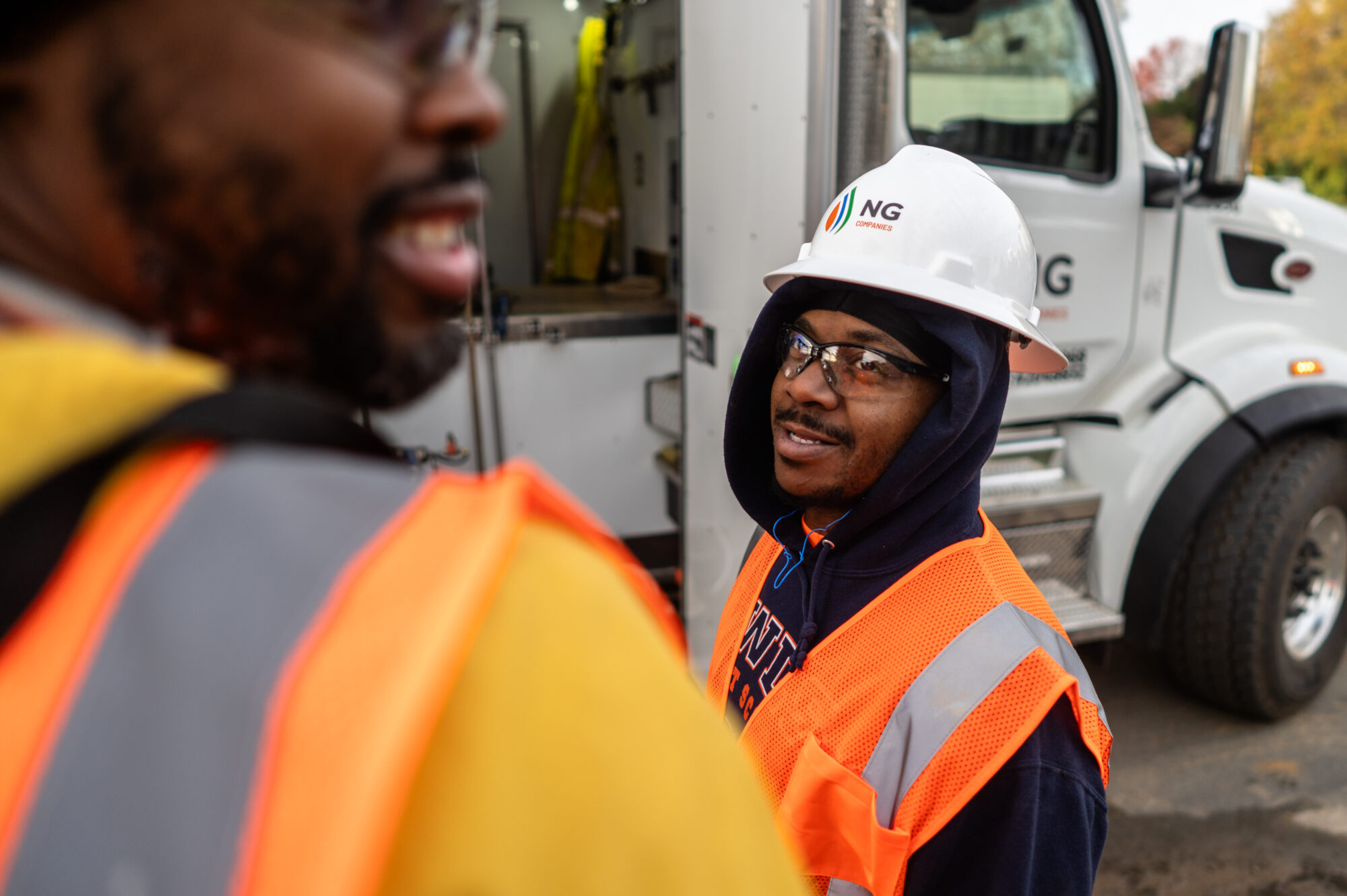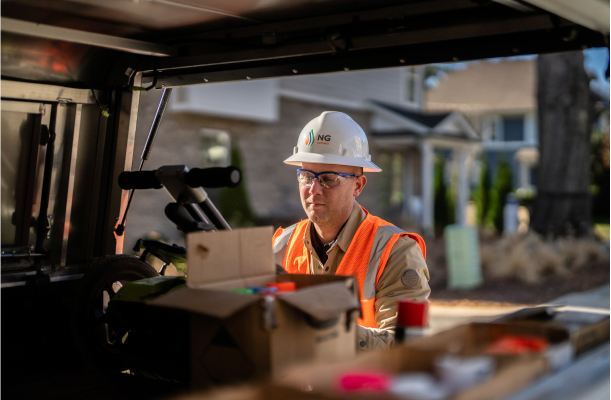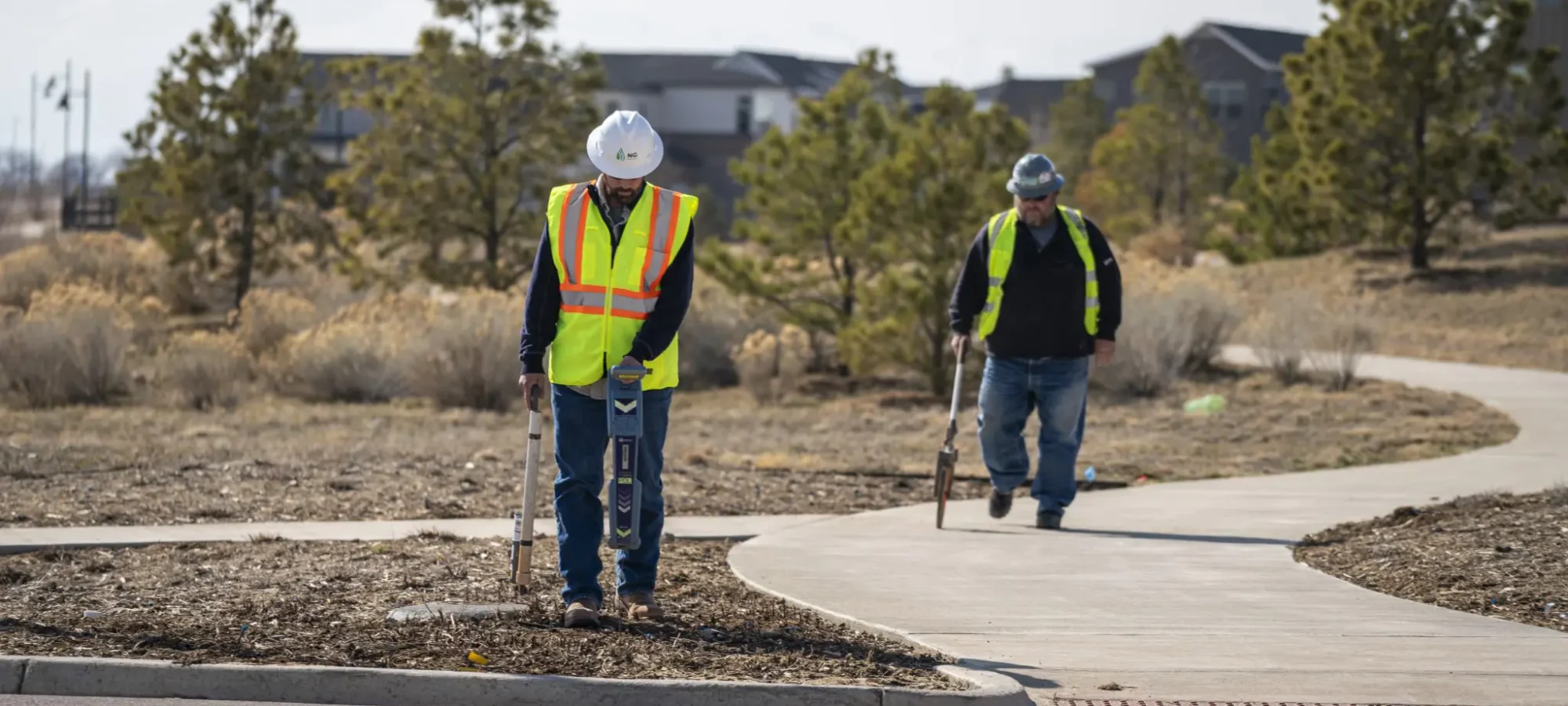In this article, we will seek to provide answers for the common questions that come up concerning locating.
Q: Why won’t 811 mark your utilities?
A: It is the law to call 811 prior to digging. 811 is only contracted to mark the portion of the utility that is publicly owned or owned by a private company. For example, 811 will only mark up to the water meter. The line from the water meter to your house is a private utility. These utilities require hiring a private utility locator to locate.
Q: Can your equipment provide depths?
A: The equipment can provide depths; however, the accuracy of the depths is dependent on several factors. Several factors are the strength of the signal, the material of utility, congestion, or proximity to other lines in the area. There are many factors that can affect the accuracy of the depths. NGC recommends using hydrovac methods to achieve accurate depths.
Q: Should I have a private locate before installing a fence?
A: Yes. Whenever the ground is going to be disturbed it is the law to call 811. 811 will mark public utilities, however, they will not mark any private utilities that are on the property.
Q: Can you locate water lines?
A: Water lines can be located depending on the type of material the pipe is made of. Copper or steel water lines are locatable. PVC, PEX, or other plastic types are only locatable with a tracer wire. If the line is made of a non-locatable material NG has hydrovac trucks that can be used in conjunction with ASCE’s level C and D quality levels of locating to expose and find water lines.
Q: Can you locate irrigation lines?
A: NG’s equipment can locate control wires. Typically control wires run alongside the “main” lines.
Q: What does each color paint mean?
A: Red markings indicate electrical. Orange markings indicate communication lines. Yellow markings indicate gas lines. Blue indicates potable water. Green indicates sewer lines. Purple indicates non-potable water. Pink indicates temporary marks or unknown markings. White indicates proposed excavation markings, borders, or proposed locations.
Q: How accurate are your locates?
A: The accuracy of the locates depends on the equipment. In perfect situations, the horizontal accuracy will have an accuracy margin of 15% of the depth of the line. This means if a line is buried 5’ deep, its horizontal accuracy would be 15% of the depth, or 9” on a 5’ deep line. In the real world where perfect conditions don’t always exist, NGC requires 2’ off each direction of all markings. If the 2’ tolerance needs to be broken NG requires daylighting the line prior to any further digging for precise accuracy.
Q: How far in advance should I call?
A: NG prides itself on a quick turnaround. NGC typically has a 48-hour turnaround from when a locate is scheduled.
Q: How long are my marks valid for?
A: Markings are valid for 30 days, or until they fade. Refreshes are required after 30 days from the last locate or when marks are no longer clearly visible.
Q: What are ASCE’s quality levels of locating?
A: There are four recognized quality levels of underground utility information ranging from Quality Level (QL) D (the lowest level) to Quality Level A (the highest level). NG locating provides quality level D-C on every project. In conjunction with NG Hydrovac, we offer quality levels D-A.
- Quality Level D. QL-D is the most basic level of information for utility locations. It comes solely from existing utility records or verbal recollections, both typically unreliable sources. It may provide an overall “feel” for the congestion of utilities, but is often highly limited in terms of comprehensiveness and accuracy. QL-D is useful primarily for project planning and route selection activities.
- Quality Level C. QL-C is probably the most commonly used level of information. It involves surveying visible utility facilities (e.g., manholes, valve boxes, etc.) and correlating this information with existing utility records (QL-D information). When using this information, it is not unusual to find that many underground utilities have been either omitted or erroneously plotted. Its usefulness, therefore, is primarily on rural projects where utilities are not prevalent or are not too expensive to repair or relocate.
- Quality Level B. QL-B involves the application of appropriate surface geophysical methods to determine the existence and horizontal position of virtually all utilities within the project limits. This activity is called “designating”. The information obtained in this manner is surveyed to project control. It addresses problems caused by inaccurate utility records, abandoned or unrecorded facilities, and lost references. The proper selection and application of surface geophysical techniques for achieving QL-B data are critical. Information provided by QL-B can enable the accomplishment of preliminary engineering goals. Decisions regarding location of storm drainage systems, footers, foundations, and other design features can be made to successfully avoid conflicts with existing utilities. Slight adjustments in design can produce substantial cost savings by eliminating utility relocations.
- Quality Level A. QL-A, also known as “locating”, is the highest level of accuracy presently available and involves the full use of the subsurface utility engineering services. It provides information for the precise plan and profile mapping of underground utilities through the nondestructive exposure of underground utilities and also provides the type, size, condition, material, and other characteristics of underground features.
Contact us today!
 About NG CompaniesLearn more about NG Companies’ values, missions, and why we’re the right choice to partner with you.
About NG CompaniesLearn more about NG Companies’ values, missions, and why we’re the right choice to partner with you. SafetyLearn more about how we keep our people, our partners, and the public safe.
SafetyLearn more about how we keep our people, our partners, and the public safe. NewsLearn more about how we keep our people, our partners, and the public safe.
NewsLearn more about how we keep our people, our partners, and the public safe.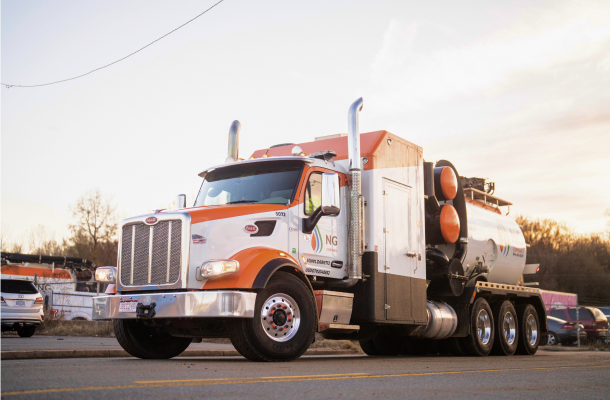 Our WorkTo learn the scope and caliber of NG Companies’ work, explore our proud body of work.
Our WorkTo learn the scope and caliber of NG Companies’ work, explore our proud body of work. OverviewDiscover how we deliver the highest level of damage prevention to ensure safety on all of your projects.
OverviewDiscover how we deliver the highest level of damage prevention to ensure safety on all of your projects.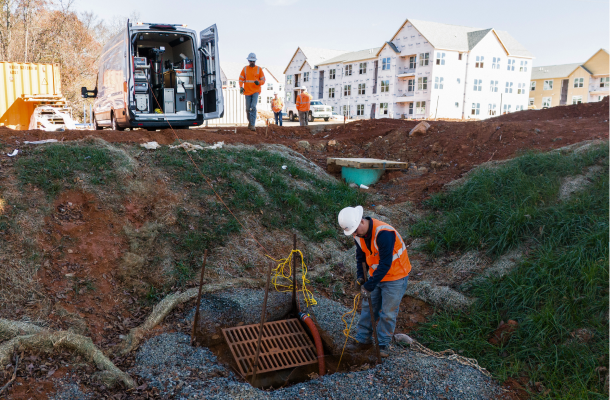 Video Pipe InspectionLearn how we operate our 360° video pipe inspection to ensure accuracy and precision.
Video Pipe InspectionLearn how we operate our 360° video pipe inspection to ensure accuracy and precision. HydrovacUnderstand what sets NG Companies apart with leading and precise industry technology.
HydrovacUnderstand what sets NG Companies apart with leading and precise industry technology.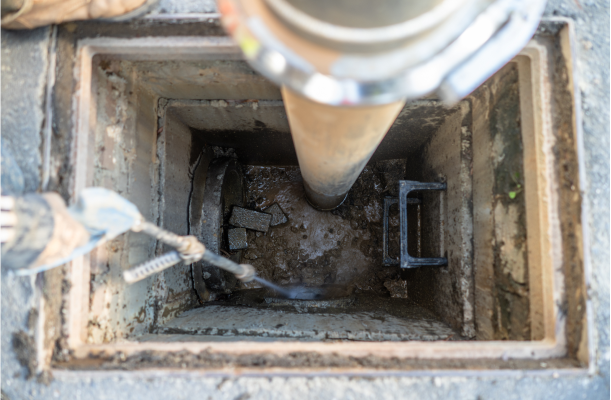 Line JettingLearn about NG Companies’ abilities to clear build-up and debris, damage assessment, and utility restoration.
Line JettingLearn about NG Companies’ abilities to clear build-up and debris, damage assessment, and utility restoration.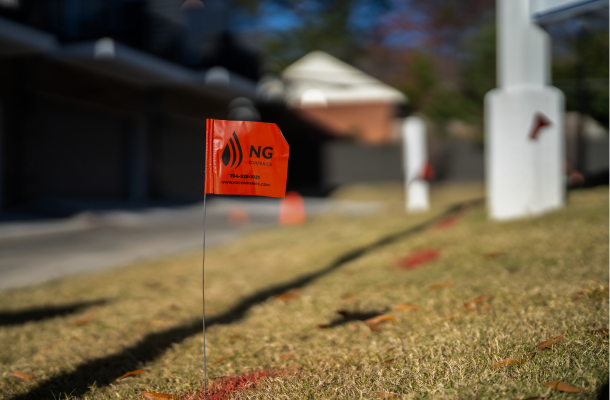 Utility LocatingNG Companies will provide swift and accurate utility locating services. Learn more about how we do it.
Utility LocatingNG Companies will provide swift and accurate utility locating services. Learn more about how we do it. About NG CompaniesLearn more about NG Companies’ values, missions, and why we’re the right choice to partner with you.
About NG CompaniesLearn more about NG Companies’ values, missions, and why we’re the right choice to partner with you. SafetyLearn more about how we keep our people, our partners, and the public safe.
SafetyLearn more about how we keep our people, our partners, and the public safe. NewsLearn more about how we keep our people, our partners, and the public safe.
NewsLearn more about how we keep our people, our partners, and the public safe. Our WorkTo learn the scope and caliber of NG Companies’ work, explore our proud body of work.
Our WorkTo learn the scope and caliber of NG Companies’ work, explore our proud body of work. OverviewDiscover how we deliver the highest level of damage prevention to ensure safety on all of your projects.
OverviewDiscover how we deliver the highest level of damage prevention to ensure safety on all of your projects. Video Pipe InspectionLearn how we operate our 360° video pipe inspection to ensure accuracy and precision.
Video Pipe InspectionLearn how we operate our 360° video pipe inspection to ensure accuracy and precision. HydrovacUnderstand what sets NG Companies apart with leading and precise industry technology.
HydrovacUnderstand what sets NG Companies apart with leading and precise industry technology. Line JettingLearn about NG Companies’ abilities to clear build-up and debris, damage assessment, and utility restoration.
Line JettingLearn about NG Companies’ abilities to clear build-up and debris, damage assessment, and utility restoration. Utility LocatingNG Companies will provide swift and accurate utility locating services. Learn more about how we do it.
Utility LocatingNG Companies will provide swift and accurate utility locating services. Learn more about how we do it. About NG CompaniesLearn more about NG Companies’ values, missions, and why we’re the right choice to partner with you.
About NG CompaniesLearn more about NG Companies’ values, missions, and why we’re the right choice to partner with you. SafetyLearn more about how we keep our people, our partners, and the public safe.
SafetyLearn more about how we keep our people, our partners, and the public safe. NewsLearn more about how we keep our people, our partners, and the public safe.
NewsLearn more about how we keep our people, our partners, and the public safe. Our WorkTo learn the scope and caliber of NG Companies’ work, explore our proud body of work.
Our WorkTo learn the scope and caliber of NG Companies’ work, explore our proud body of work. OverviewDiscover how we deliver the highest level of damage prevention to ensure safety on all of your projects.
OverviewDiscover how we deliver the highest level of damage prevention to ensure safety on all of your projects. Video Pipe InspectionLearn how we operate our 360° video pipe inspection to ensure accuracy and precision.
Video Pipe InspectionLearn how we operate our 360° video pipe inspection to ensure accuracy and precision. HydrovacUnderstand what sets NG Companies apart with leading and precise industry technology.
HydrovacUnderstand what sets NG Companies apart with leading and precise industry technology. Line JettingLearn about NG Companies’ abilities to clear build-up and debris, damage assessment, and utility restoration.
Line JettingLearn about NG Companies’ abilities to clear build-up and debris, damage assessment, and utility restoration. Utility LocatingNG Companies will provide swift and accurate utility locating services. Learn more about how we do it.
Utility LocatingNG Companies will provide swift and accurate utility locating services. Learn more about how we do it.

